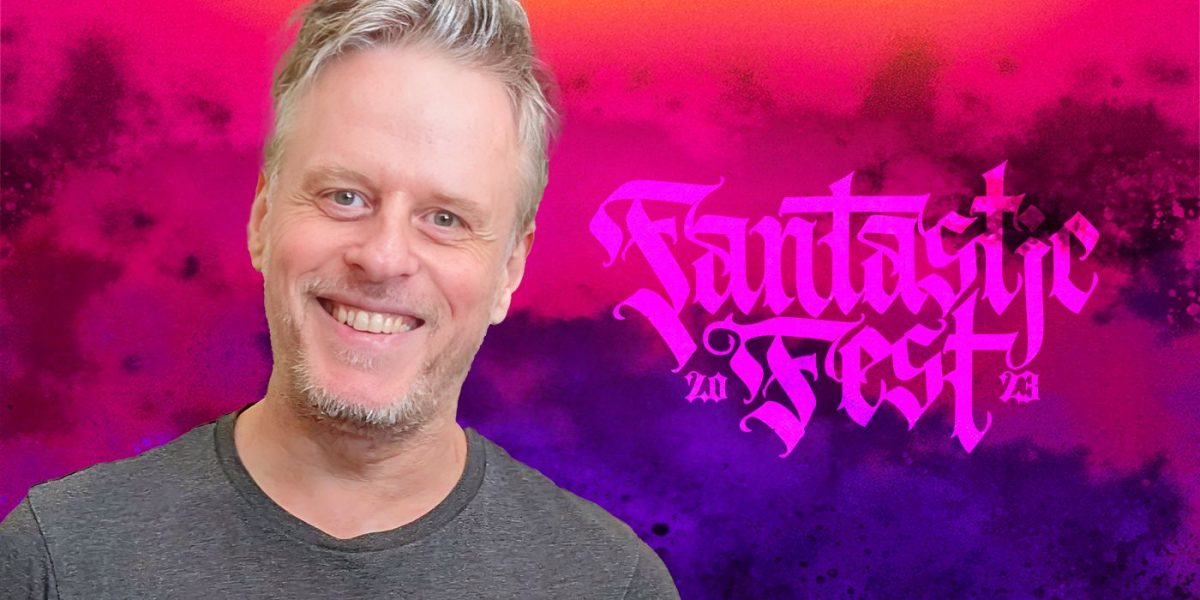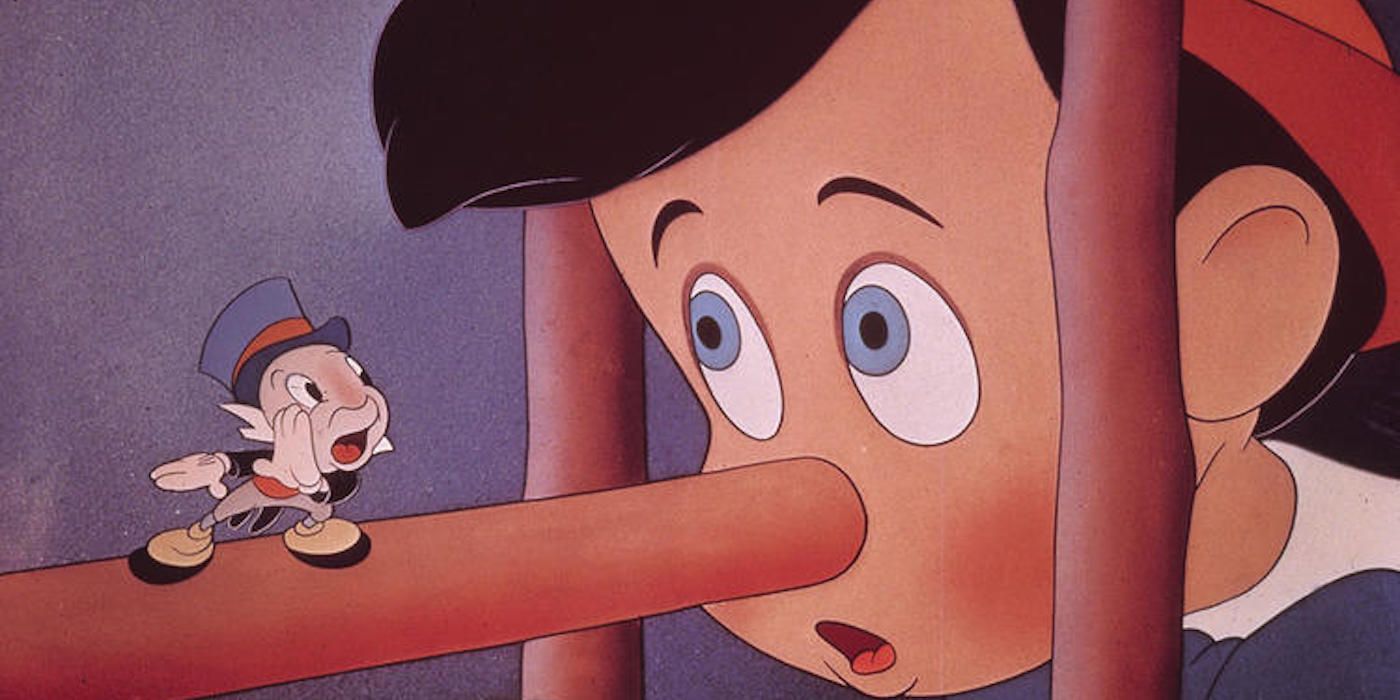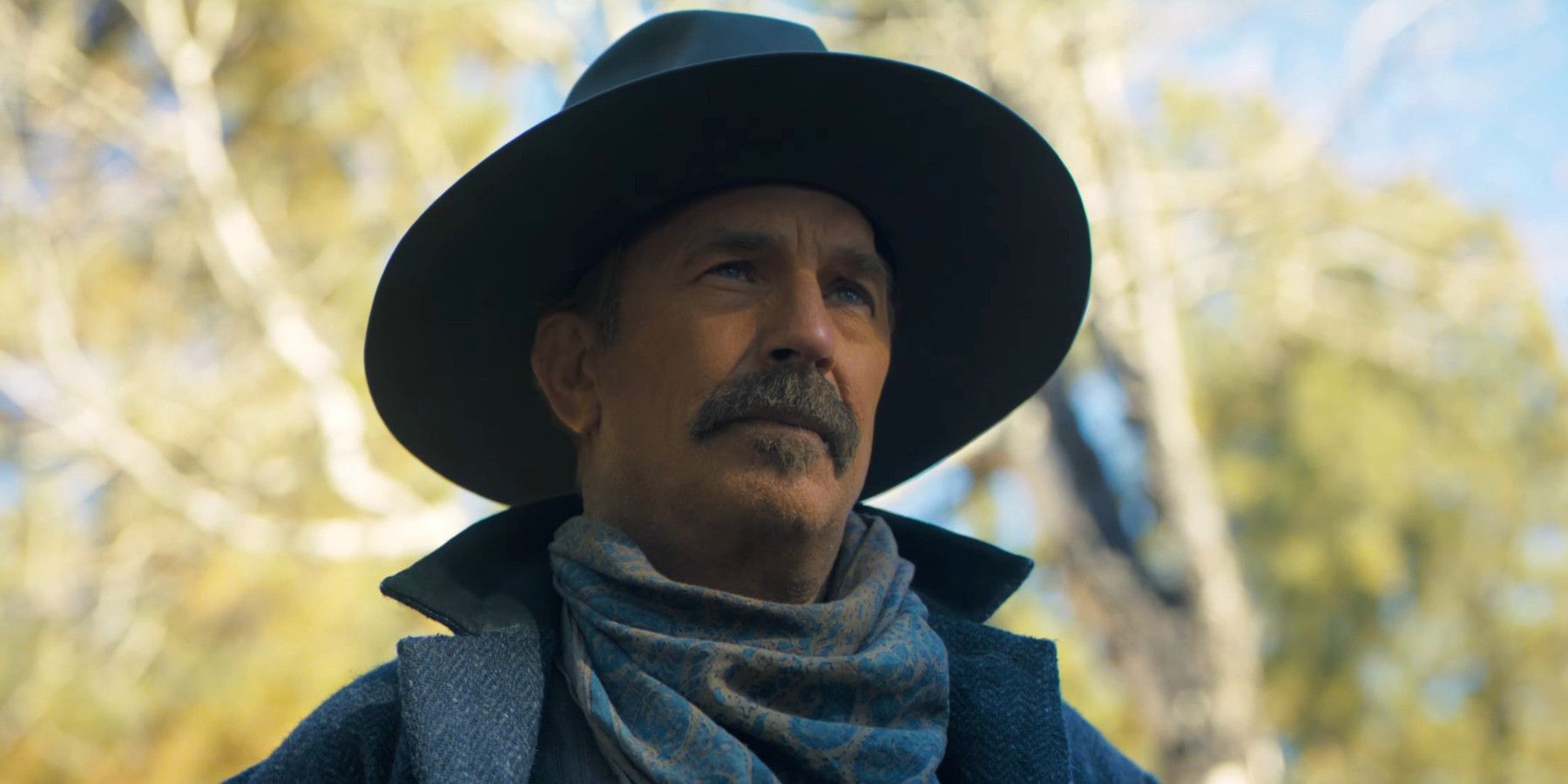
How a “Sick Obsession” with Filmmaking Became the Horror Movie ‘Stopmotion’
Oct 15, 2023
The Big Picture
Robert Morgan makes his feature directorial debut with a brilliant live-action/stop-motion animation hybrid film, Stopmotion. The movie stars Aisling Franciosi as a stop-motion animator who struggles to separate real life from the macabre film she’s creating. During our Fantastic Fest interview, Morgan recalls how he once made himself sick while making a stop-motion animation short film, he discusses his experience teaching Franciosi the art of stop-motion animation, reveals the most unusual material he’s ever used to make a puppet and loads more.
When you love something, it can be tough to figure out where to draw the line. How far do you push yourself for your art and how far is too far? That’s an idea director Robert Morgan explores in his first feature film, and it’s inspired by his own personal experience going through such a situation while making the stop-motion animation short, Bobby Yeah, a process that literally made him sick.
His feature directorial debut, Stopmotion, is a stop-motion animation/live-action hybrid. It stars Aisling Franciosi as a stop-motion animator whose talents have solely been used to support her mother’s work. However, when her mother is out of the picture and she finally gets the opportunity to create something of her own, she slowly loses the ability to separate real life from the macabre film she’s making.
While in Austin for Stopmotion’s Fantastic Fest 2023 world premiere, Morgan visited the Collider interview studio to walk us through how he made the film. He explained how his experience making the short film, Bobby Yeah, influenced Stopmotion, emphasized how Franciosi is actually a naturally gifted animator, revealed the most unusual material he’s ever used to create a stop-motion puppet, and loads more.
Hear it all straight from Morgan in the video interview at the top of this article, or you can read the interview in transcript form below.
Image via IFC
PERRI NEMIROFF: Clearly I like your movie, but a lot of our viewers will not know about Stopmotion just yet, so would you mind giving a brief synopsis of your film to start?
ROBERT MORGAN: Stopmotion is a psychological horror film about a stop-motion animator, played by Aisling Franciosi, who – I don’t know how much to give away.
This is part of the reason why I like asking for synopses because then they tell me when to stop.
MORGAN: … who starts to make a film under some psychological stress and bad things happen.
That’s spot on there.
I wanted to start with two personal questions for you based on how you described the movie in your director’s statement. As a filmmaker, can you give us an example of a time when you went too far for your art? But then I want the opposite, a time when you went above and beyond, and maybe proved naysayers wrong and upped the confidence you had in yourself as a filmmaker?
MORGAN: To answer both those questions, I would talk about one specific film that I made, a short animation film I made, called Bobby Yeah, which was made about 10 years ago. I think it played here, actually, at Fantastic Fest. I made that film with no money over a period of about three years, just sort of semi-improvising it, making everything myself. It became an almost sort of sick obsession.
And actually, the film here, Stopmotion, is inspired by my making of that film because I had the sensation that the film started to take on a life of its own. That was kind of part of the inspiration for this movie, Stopmotion. I think I just got really immersed and sort of drowned in it a little bit. And I actually got so obsessed with it, I actually got ill. I got pneumonia while I was making it because I kind of was pushing myself too hard and making myself sick from just the sheer obsession and stress of getting it perfect. So that was probably a period of going too far. It did have an almost – sort of physically assaulted by your own film.
Image via Robert Morgan
How about the opposite? A time when you proved naysayers wrong by going above and beyond and pushing yourself further than you ever could have imagined?
MORGAN: It’s the same film because it was a complete work of obsession. When I finished it, it was about 23 minutes long, a bad length for festivals for a short film. Loads of people told me to cut it down, “It’s too long for festivals. Just cut it down.” And I was like, “I’m not cutting it down. I’m not touching it. I don’t care if festivals don’t like it. That is the film.” And I started sending it to festivals, and the first couple of festivals I sent it to rejected it. I was like, “Oh, maybe I should have listened. But no, I don’t care. I love the length it is.” And then it started picking up and going to more festivals, and then it just became this absolute sort of phenomenally successful festival film. It played at Sundance. It won 30 awards. And off the back of that, I met Alain [de la Mata], the producer of Stopmotion, and Wild Bunch, and those guys because they were fans of the short, and this led to this film.
That short is on your YouTube channel, right? If someone wants to go watch it, they can look up Robert Morgan on YouTube and quickly find that.
MORGAN: All of my short films are on YouTube.
Highly recommend it if you haven’t seen it yet.
I want to talk a little bit about the art of stop-motion, which again, fascinates me to no end. First, let’s say there’s someone out there who really wants to try stop-motion animation for the very first time. What is one key piece of advice you would give them in order to get them started on the right foot?
MORGAN: Get yourself a laptop. Get yourself a cheap digital SLR camera. Get yourself Dragonframe, or there are other stop-motion animation softwares on the market. Get yourself a little setup, basically. And get yourself a setup that you can do from home and start experimenting because it’s only by doing it – I don’t think you could possibly prepare somebody for stop-motion. You have to just do it, and then you’ll know very quickly whether you have an affinity with it or not. Some people do, some people don’t. I teach animation as well. Some students have it, some don’t. And actually, when I was doing Stopmotion, I had to teach Aisling Franciosi, the actor how to animate. I had to show her the ropes. She is basically an amazing animator.
Of course she is.
MORGAN: So her first attempt at animating, she was just doing it. It’s actually pretty excellent animation for somebody who’s literally never done it before.
That is not an easy thing to do because it’s not like you can just have an actor in this movie who just goes through the motions and repeat things. She needs to make sure that the audience believes that artistry has been in her family since she was born.
Image via IFC
What is something about her and how she picked up stop-motion animation that signaled to you that she is one of those people who just got it, who had it in her?
MORGAN: I knew from the first moment I spoke to her. There was a list of actors that could have played this role. I had a very small list. I think there are only a handful who I really felt could do it, and Aisling was one of those actors. She responded to the script, loved it. We chatted on Zoom, and she said straight away she wanted to do it, and then we could just sort of relax and talk about the character. The cogs were already turning. She was already talking about how she was gonna do certain things on our first meeting, so I just knew straight away this is someone who’s very, very serious and committed. She’s a chameleon, as well. If you watch her films, she’s different in everything she does, so I knew she would totally bury herself and immerse herself into the role. I didn’t really worry about it at all. I kind of knew it was in excellent hands, and I think I was right.
Oh my, definitely.
So you cast her in the role, you have that faith in her – can you give an example of something that happened during the making of the movie where she took something well beyond what you ever could have imagined, where maybe she brought something out of your own screenplay that you didn’t even realize was there to begin with?
MORGAN: I think it was in every facet of the character’s emotional journey she communicated all of those emotional places more than I thought those emotional places would be expressed. So the sense of sadness within her came across more strongly, the sense of obsession came across more strongly, and the sense of rage came across more strongly, as well. Without giving anything away, there are images of her rage in this which are quite terrifying. I think one of the things I really like about her performance is there’s a really broad range of places she goes to. She’s actually really sweet in some scenes and vulnerable, and then in other scenes, she’s quite cruel, and in other scenes, she’s just terrifying. And she’s sweet when she talks to the Little Girl, Caoilinn [Springall]. She’s very maternal, as well, and very kind of sweet with her. So I think there’s just a really nice range of emotions that she plays.
What was it like casting the Little Girl role? That seems like an especially challenging part for a young actor to take on, and ultimately, the two of them wound up making the perfect pairing together.
MORGAN: I don’t want to just make out it was all a breeze, but it was! [Laughs] Caoilinn is amazing. She’s just such an amazing actor and such a professional. In fact, the first time we did a little rehearsal, I wanted to just get Caoilinn and Aisling together to just play out a little scene just to see what it would be like, and at the end of it, Aisling said to me, “I’ve got to up my game because she’s really good.” She’s a complete natural. She was in that George Clooney movie, The Midnight Sky, and I’d read up about how Clooney had searched for a long time for the right girl, and he looked at hundreds and hundreds of child actors and singled Caoilinn out, so I just thought, “Well, he’s done all my work for me.” [Laughs]
Yeah, really. [Laughs] Thank you, George Clooney!
MORGAN: I think she’s brilliant.
The two of them are absolutely perfect together.
Image via Robert Morgan
I wanted to go back to some of my stop-motion questions. We do have a lot of aspiring filmmakers who watch Collider. They’re always looking for inspiration and advice. What would you say is the biggest misconception about what it means to be a stop-motion animator?
MORGAN: Well, ironically, because I’m guilty of this because I’ve just made a film about a very weird and scary animator, the misconception is that we’re all weird and scary, because we’re not. [Laughs] Although you wouldn’t think that from watching this film.
That is a fair example to bring up right there. Whether it’s something in this film or all the shorts you’ve animated, what is the single most difficult thing to bring to life via stop-motion?
MORGAN: Walking. [Laughs]
Really?
MORGAN: Yeah, characters walking. There’s nothing I hate more when I’m animating [than] having to animate a character walk into a room in a big wide shot, so I try and avoid it as much as possible. It’s so boring, and it’s not really about the performance of the character. It’s just sort of administrative boring stuff of getting a character from A to B, but you’ve got to do all this annoying leg work and arm movements and stuff, and I just find it really boring, so I tend not to do it anymore. When I have a character who’s walking into a room, I just cut to a close-up and slide it off-screen. [Laughs]
You can. I get it.
MORGAN: I just use editing to get around it because I can’t be bothered anymore.
I am curious about the production process on this film. Is it a situation where you film all the live-action components and then take your time working on the stop-motion elements? But I would also imagine that you need your puppets beforehand so that the actors that are doing the live-action material could be hands-on and it could flow well together?
MORGAN: The animation characters, the puppets, they are props as well as characters that are in the film and come to life and stuff, so they have to be props that the actors could handle. So they were all working puppets. Basically, we made all of the puppets before we shot and then we shot all of the live-action stuff, and then the animation shoot was sort of in two phases. The first phase is where there’s any animation puppets interacting with live-action characters in the same frame. So, for example, there’s a scene when Aisling’s in bed and one of the puppets walks into the room, and that had to be shot at the same time as the live-action stuff because the plates have to match. Very technical, boring stuff that I won’t go into, but it had to be done parallel to the live-action shoot. When all of that was done and all the stuff involving the actors was done, we started editing and while editing, I went and shot all of the film-within-the-film stuff using the puppets that had been props. They’re now puppets, and then I animated that stuff. And I have the benefit of watching a cut forming at the same time, so I can sort of tailor the animation a little bit to how it cuts in and out of it because I’m editing the film at the same time.
Image via IFC
Can you maybe give us a specific example of that, a time when some of the live-action material you shot wound up influencing what you animated after the fact?
MORGAN: One of the animation sequences that she does, when we first meet this Ash Man character …
Brilliant character.
MORGAN: The scene when she comes out of that bit of animation starts with a shot of the window from inside the set and the puppet standing outside the set, and she picks it up and says, “What should we call this guy?” And then they talk about it. Well, when I animated it, I thought, “Well, I’m gonna end the sequence with the same frame as what we shot in live-action,” so the animation sequence ends with the Ash Man character walking towards the window, and ending in that same frame. So it cuts really well there because I’ve used the live-action footage to actually inform how I approached the animation footage, if that makes sense.
Yes, it does. Many moving parts here! Again, this film is a feat.
MORGAN: Yeah, very complex.
As though shooting a live-action film alone isn’t tough enough, and as though shooting a stop-motion animation film alone isn’t tough enough, now you’re combining them. You make the techniques pair together exceptionally well here.
MORGAN: And on a relatively low budget as well.
You brought up the Ash Man, so I’ll go to him next. What would you say is the biggest difference between how you pictured that character looking when you first conceived of him and then how he turns out in the finished film?
MORGAN: That’s a good question because when we wrote the script, the character is made out of raw meat and dirt and other stuff, and that could go so many places. There are various iterations. That’s what made it even more complex is there are various iterations of that character. Without giving anything away, the Ash Man has different forms in the film, so they’re all quite different versions of it, but you always have to know it’s the same character. So there have to be certain signifiers within the design of the character that tell you it’s the same character in a different form.
For me, it was trying to kind of identify a facial expression that was just sort of quite intense and scary, and keep that consistent. So it came down to the eyes, basically, focusing on the eyes. So that was always consistent when we wrote the script. It mentions in the script it has these “staring eyes.” But yeah, the presence of the Ash Man is more important than how it looks, so I was never that obsessed with how it looks. It was more about the feeling it creates, and you don’t see it that clearly. You see glimpses of it, but it’s not that clear.
Image via IFC
This is my big promotional idea. You can tell IFC about this. To promote the movie, you should make some sort of a 101 video, Create Your Own Ash Man. I would take that kind of tutorial and try to make one myself.
MORGAN: You just use what’s in your fridge!
Speaking of that actually, whether it’s something in this film or anything else you’ve made, what is the most bizarre material you’ve ever used to create a character or a set?
MORGAN: Oh, that’s easy. I used my toenails once to make a puppet out of. Go check out Bobby Yeah on YouTube because it’s got a puppet made of about a year’s worth of my toenails.
Oh no! Did you deliberately make that choice at the top of a year? Like, “I’m going to collect enough to make this thing in my next short?”
MORGAN: No, I just started collecting my toenails. [Laughs] I didn’t know what for. I just thought, “Oh, I quite like collecting my toenails,” putting them in a little bottle, and then when I was making Bobby Yeah, I thought, “Oh, that would make quite an interesting material to make a puppet out of,” so that’s what I did.
Do you have a white whale kind of material? A material out there that interests you that you’re hoping to make a character out of one day?
MORGAN: I mean, you can make a character out of anything. So there’s nothing specific, but if you can touch it, you can animate it.
The possibilities in my head that are swirling right now …
I wanted to make sure to squeeze in this question before we have to wrap up because someone at this festival described your movie as “squelchy” because of the visuals and, in particular, the sound design. I’ve watched a couple of your shorts. It does seem like there are similarities, so what kind of sound techniques have you used in the past that came in handy here, but then also, what are some new sound design elements that you incorporated in Stopmotion for the first time?
MORGAN: I think sound is vitally important for films like this, but also a film that envelops you like this. Or that’s the intention, anyway. So sound is, for me, 50% of the experience. It’s that important, I think. It really does help immerse the viewer into the world of the film. So I’ve always been very obsessed with having a lot of attention to detail with the sound. All the foley is extremely detailed, so when puppets move, you just hear the clothes moving. And they are a little bit sweaty and sticky looking, so it just makes sense that they make that kind of noise when they move.
And then with this film, I worked with an amazing sound designer based in London called Ben Baird who just did an amazing job and kept the consistency of the sort of thing I’ve done in my shorts, but he’s taken it to another level. So it has that intensity of foley in it, but also he brought in new things. It was his idea, for example, to bring in the squeaking sound of the armatures. That was his idea. He just said that would be quite an interesting thing to play with. And actually, as we went further into the sound editing of the film, that became more and more useful. That sound crops up in inappropriate moments, shall we say?
[Laughs] Good tease right there.
MORGAN: That was a really, really exciting thing that he came up with that allowed us to really kind of bring the concepts home more clearly, just how lost in the world of animation that Ella actually is.
Image via Robert Morgan
This is a really big, broad question, but because what you’ve done here is such a significant filmmaking feat, do you have any goals for yourself as a filmmaker that feel more within reach now than ever because you accomplished Stopmotion, because this movie exists and you did it?
MORGAN: I mean, every film’s difficult. Every film has different challenges. The good thing about doing a film like this is, if you can pull it off, it has a built-in sort of wow factor because it is doing something quite novel with animation and live-action. Not that you should be complacent about the other aspects. You have to be totally full on making sure every single aspect of the film is working, but it gives you a bit of a safety net. It’s not a safety net, but it’s like it gives you a sort of secret weapon in a way. If there are other problems in the film, you have this element that I was fairly certain was gonna work. But I wasn’t complacent and I worked very hard to make sure all of the elements were working. But, if you take that away – for example, I would say it’s much more difficult, it would be for me at least, to strip all of that stuff away and just have a film that’s only about performance and acting. So, it’s not necessarily easier to make a simpler kind of film. It can work both ways. I think all films are very difficult to make.
Oh my, yeah. I think literally every single movie that is made is kind of a miracle and it deserves to be applauded.
MORGAN: Yeah, definitely. It’s incredibly difficult, before you even get to the set, to actually get it financed. Huge respect to anyone who just gets a film made.
Speaking of that, this is my first Fantastic Fest. One of my favorite things about being here is seeing so many wonderful filmmakers support each other, be excited for each other, and be inspired by each other as well. Can you pinpoint something you’ve seen in another film here that made you go, “Damn, that is impressive and that inspires me?”
MORGAN: I really enjoyed Infested, which was the killer spider movie. I’m a bit squeamish about spiders. Not quite an arachnophobe. I thought it was a really nice mix of social commentary mixed with killer spiders. Some of the scenes in it, the way that they were staged with the audience seeing the spiders and the characters not seeing the spiders, was incredibly well done. You could hear the visceral reaction. I mean, it really helps because spiders are just inherently just horrible. I was very impressed as well with the, I’m assuming it was CG that they did the spiders [with], but they pulled it off really well, I think. Normally that kind of thing would be very difficult to pull off, CG spiders, but I’m assuming it was a mixture of practical and CG, but it worked very well, I think. It never took me out of the film. It really felt like they were in the room.
I love hearing that. Do you think you could ever bring yourself to stop-motion animate a spider?
MORGAN: No [laughs], that’s where I draw the line.
Publisher: Source link
Kelly Clarkson Discussed Weight Loss And Ozempic Rumors
Kelly Clarkson Discussed Weight Loss And Ozempic Rumors A few weeks later, Kelly discussed her physical transformation for a second time, celebrating the fact that she no longer felt the need to wear shapewear. Amid all the speculation, Kelly attributed…
May 18, 2024
Early Memorial Day Sales You Can Shop Now: J.Crew, Spanx & More
Kate Spade: Save 40% on Kate Spade markdowns. Kate Spade Outlet: Nab 70% off hundreds of Kate Spade styles. Plus, an EXTRA 20% off shoes and crossbodies. Lilly Pulitzer: Shop 25% off deals on Lilly Pulitzer spring styles. lululemon: Technically, there isn't a lululemon sale…
May 18, 2024
Meghan Markle Swooned Over Prince Harry And People Are Obsessed
Notably, Harry’s brother, Prince William, and father, King Charles III, failed to show up to support Harry at Wednesday’s event at St. Paul’s Cathedral. However, people were touched when they noticed he was surrounded by relatives from his late mom,…
May 17, 2024
Maria Shriver Calls Out Harrison Butker for Graduation Speech
Maria Shriver is throwing a flag on Harrison Butker's recent comments. The journalist weighed in on the Kansas City Chiefs kicker's eyebrow-raising commencement address at Benedictine College earlier this week, where he expressed his belief that women role should be in the home…
May 17, 2024











